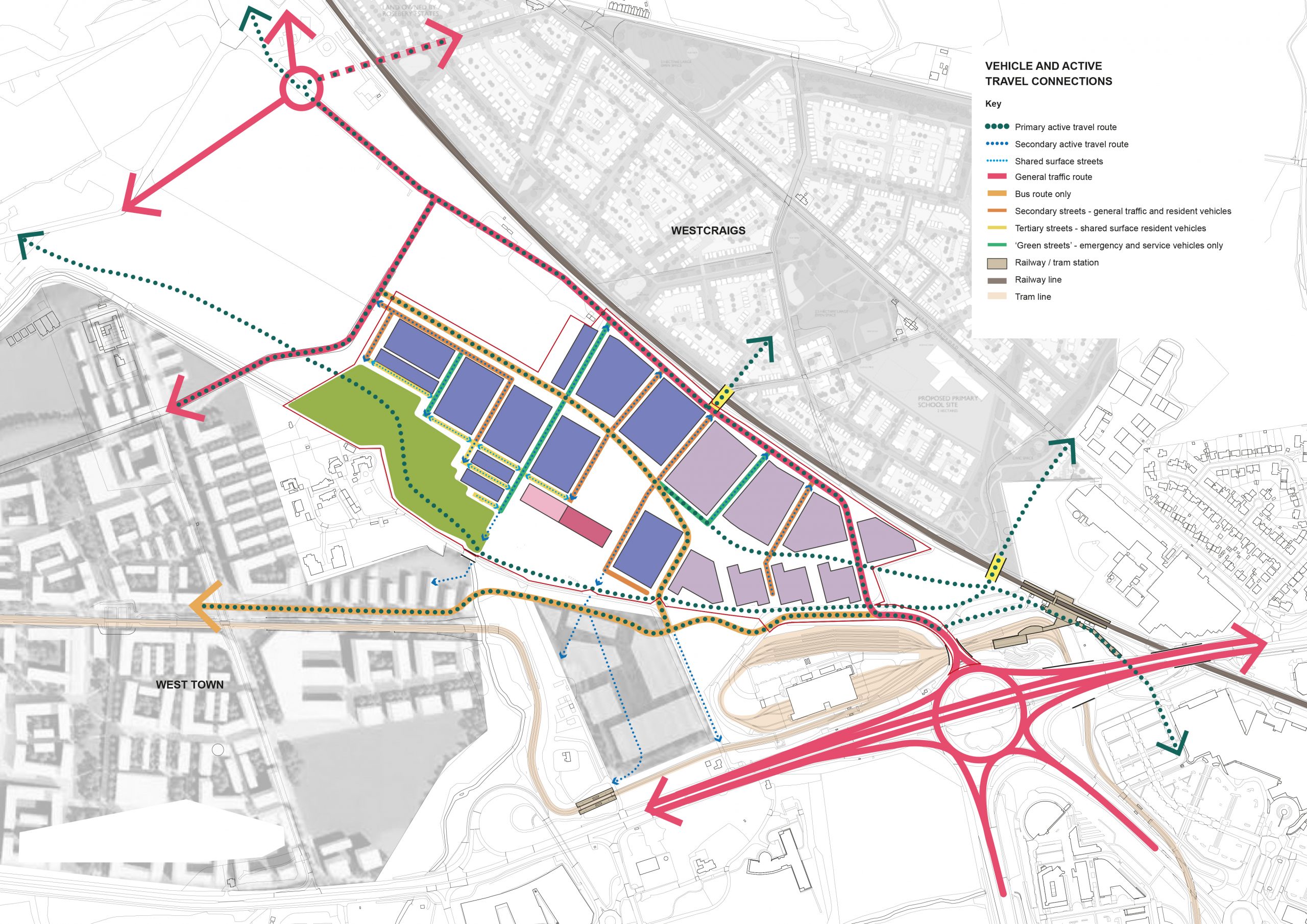Active travel, which includes forms of transportation that involve physical activity, such as walking, cycling and wheeling, is critically important when planning a new community, in fact, at Elements Edinburgh we’ve designed from an active travel first perspective so our active travel routes shape the site rather than fit in around the buildings and roads.
Active travel contributes to the creation of more pedestrian and cyclist-friendly infrastructure, such as bike lanes and walking paths. These improvements not only benefit those who choose active travel but also make communities more pleasant, accessible and liveable, with increased open spaces for the whole community to enjoy.
When considering a new community, there can be concerns around the impact this will have on the existing travel infrastructure but active travel can alleviate this by giving people the choice not to drive. Providing easily accessible alternatives can actually help to reduce traffic congestion in urban areas. More people walking and cycling means fewer cars on the road, which can lead to reduced travel times and less frustration for everyone.
This also has a positive impact on the environment. Active travel produces zero emissions, reduces air pollution and has a lower carbon footprint than motor vehicles. The more active travel routes we provide the less motor vehicles will be required which will contribute to a reduction in greenhouse gas emissions and combat climate change. Noise pollution is also reduced, providing a more peaceful urban environment and a better quality of life for residents.
The reduction in traffic can also lead to economic benefits. It has the potential to reduce the need for large infrastructure projects like road networks and can have an impact at an individual level too with people saving money on fuel and car maintenance. Additionally, active transport networks support local business, with walkers and wheelers more likely to shop locally.
When considering individual benefits it’s impossible not to discuss the potential health and wellbeing benefits of active travel. Regular walking, cycling and wheeling can help to reduce the risk of many chronic diseases like obesity, heart disease, diabetes and certain types of cancer. Physical activity releases endorphins, reduces stress and allows for time in nature to reflect and decompress which has a positive impact on mental health and wellbeing. It improves overall physical and mental fitness and gives opportunities to interact with other residents and contribute more to create a thriving community and sense of belonging.
Active travel is inherently inclusive, allowing all people, regardless of their age, gender, mobility, ethnicity or circumstances to access local services and amenities safely and easily by removing barriers and promoting greater investment in pedestrian safety measures such as pedestrian only areas and traffic calming.
At Elements we understand the importance of active travel and are committed to building a community with inclusion, health and wellbeing and sustainability at its heart.



